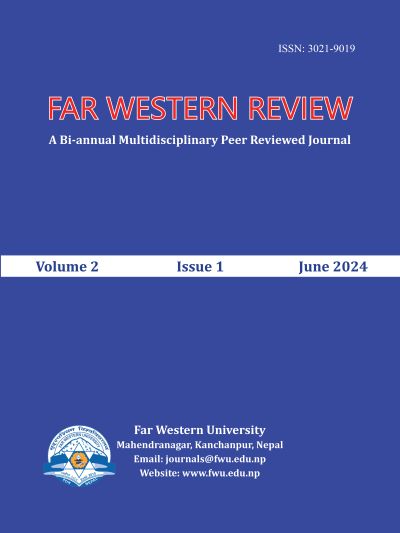Sero-epidemiological Study of Japanese Encephalitis in Some Selected Hospitals of Nepal
DOI:
https://doi.org/10.3126/fwr.v2i1.70537Keywords:
Acute encephalitis syndrome, IgM capture ELISA, Japanese encephalitis, japanese Encephalitis Virus (JEV)Abstract
Japanese encephalitis is a major public health problem in Nepal, about 1000-3000 cases and 200-300 deaths reported annually, mainly in endemic areas and sporadic cases have also been reported from non-endemic areas such as Kathmandu. The diagnosis of JE is based on clinical signs and symptoms. This study was conducted in some hospitals of Nepal to find the epidemiological trend of the disease. Serological surveys have revealed that about 10 % of people living in JE endemic areas are infected with the virus, most of whom are infected before age 15. This type of study is essential to be carried out in our country to know the seroepidemiology of the JE virus. A descriptive cross-sectional study was conducted, and 267 serum samples from suspected Acute Encephalitis Syndrome and viral fever cases were collected from three different hospitals in Nepal. The results were confirmed by an IgM capture enzyme-linked immunosorbent assay. Of 267 serum samples, 242(90.6%) were clinical suspects of Acute Encephalitis Syndrome, and 25(9.4%) were clinical suspects of viral fever. Of 267 cases, 84(34.7%) Acute Encephalitis Syndrome cases and nine (36.0%) viral fever cases were positive for anti-Japanese encephalitis virus IgM antibodies. The seropositivity was higher in males 60(39.9%) than in females 33 (29.2%). Out of the total positive cases, the highest seropositivity (40.2%) was observed in the age group 15-50, and the least (25.0%) was observed in the age group above 50. Tribhuvan University Teaching Hospital accounts for highest seropositivity (36.6%) and the least (32.2%) in Bheri Zonal Hospital. The overall seropositivity rate was found to be 34.8% which was higher than the national data (21.6%). This study reports that the seropositivity was higher than national figure and the seroepidemiology pattern of JE has changed, indicating a need for urgent intervention. Diagnostic facilities should be expanded in every hospital in the endemic region of Japanese Encephalitis for better surveillance.
Downloads
Downloads
Published
How to Cite
Issue
Section
License

This work is licensed under a Creative Commons Attribution-NonCommercial 4.0 International License.
CC BY-NC: This license allows reusers to distribute, remix, adapt, and build upon the material in any medium or format for noncommercial purposes only, and only so long as attribution is given to the creator.




